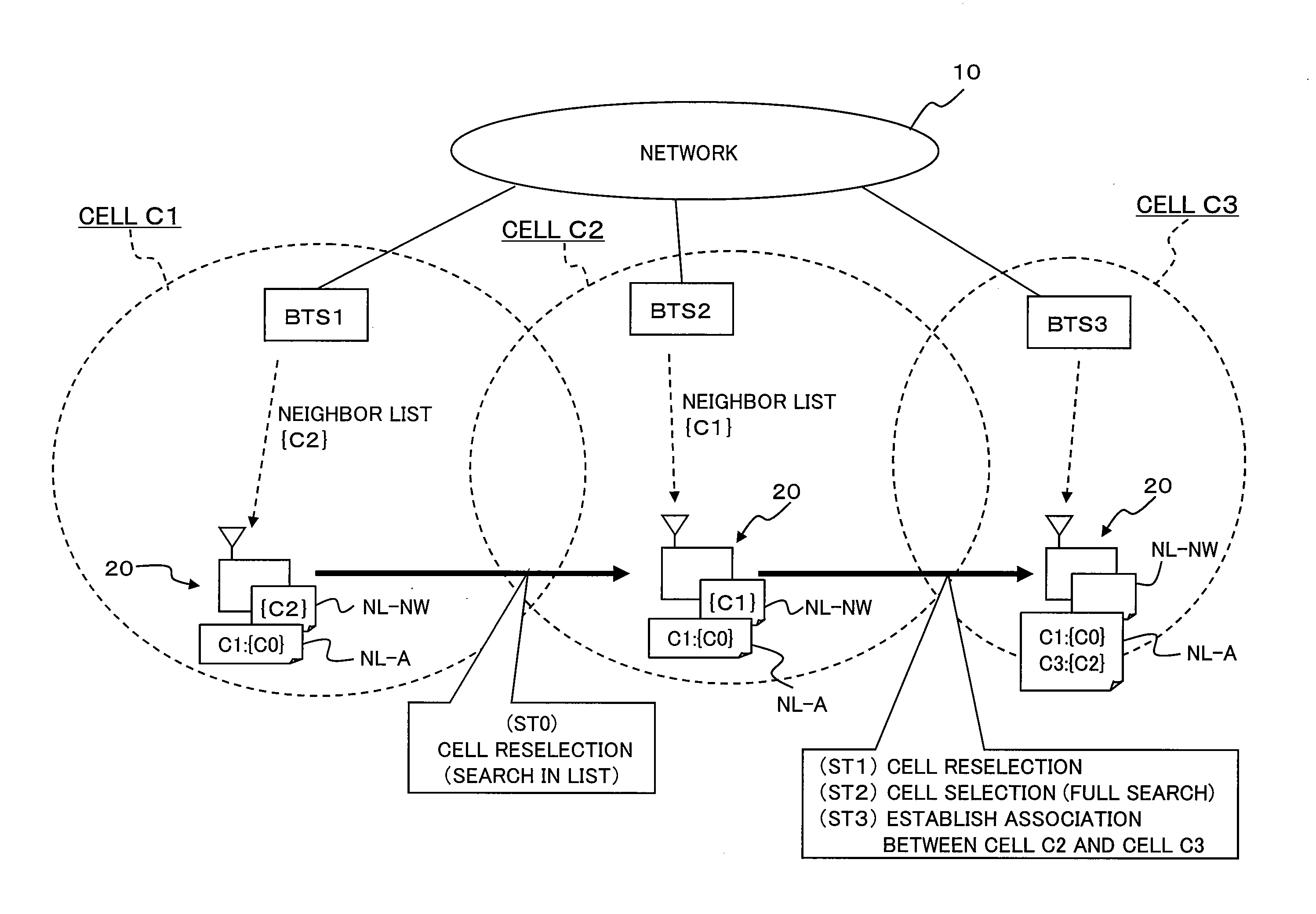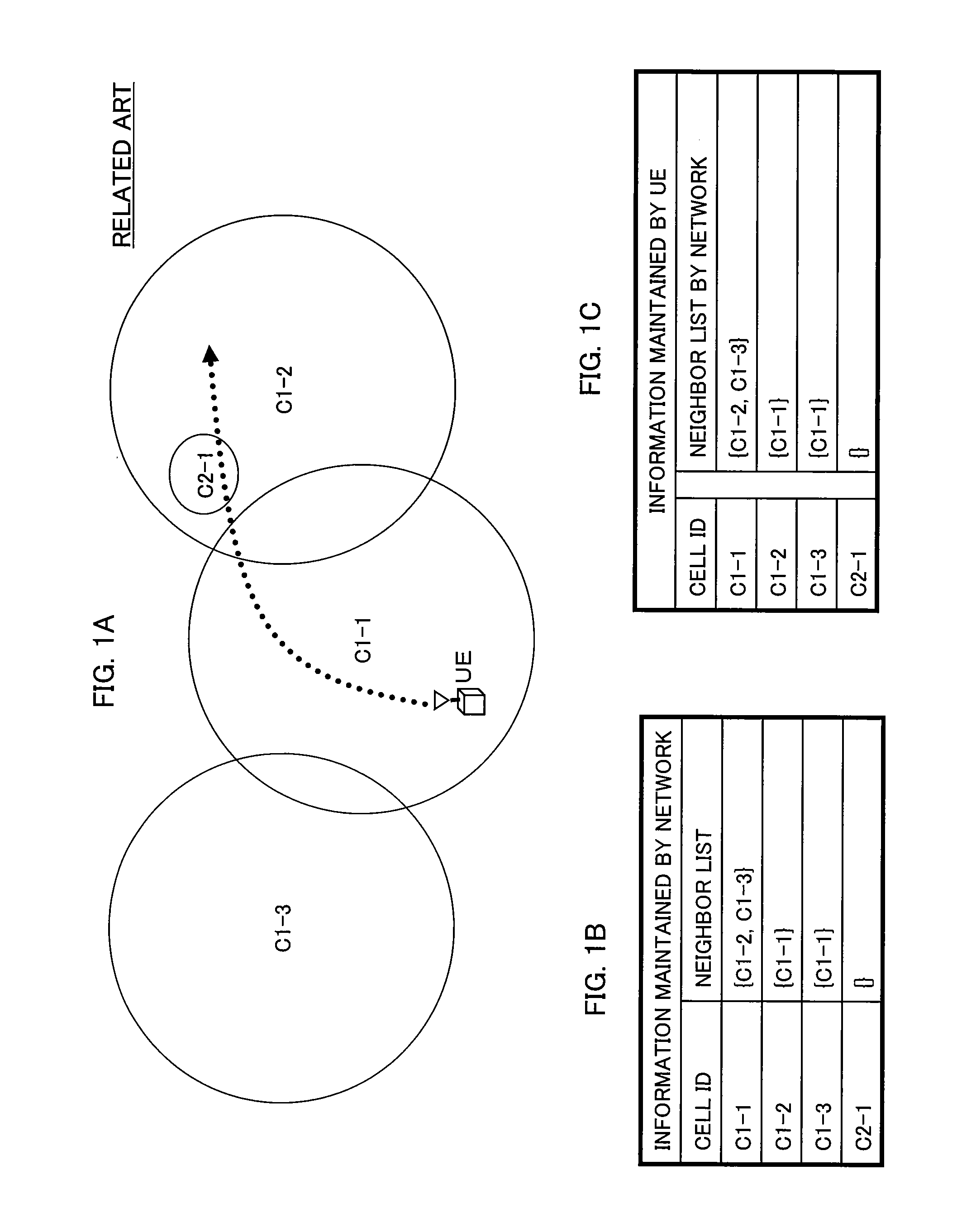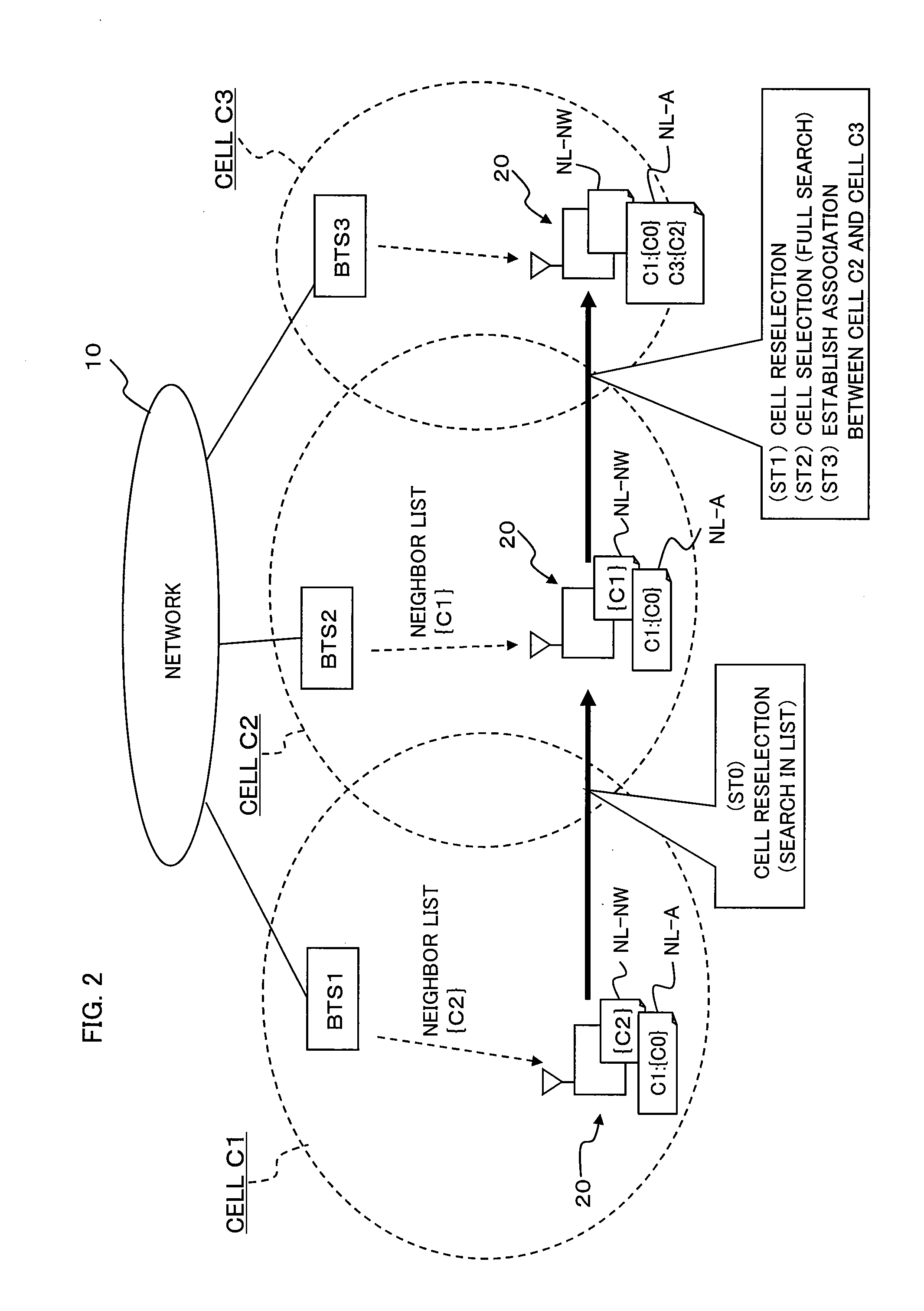Method and device for mobility management of mobile station in mobile communications system
a mobile communication system and mobility management technology, applied in the field of mobile communications system, can solve the problems of increasing power consumption, not all cells are covered, and the battery, by which user equipment is driven in general, is exhausted sooner, and achieves the effect of avoiding the increase in the interruption of services to the mobile station
- Summary
- Abstract
- Description
- Claims
- Application Information
AI Technical Summary
Benefits of technology
Problems solved by technology
Method used
Image
Examples
first example
4. FIRST EXAMPLE
[0082]FIG. 6 is a network diagram showing an example of a mobile communications system according to the present invention. In this example, the Internet 401 and a radio network 403 can communicate through a gateway (GW) 402, and the radio network 403 includes a plurality of base stations BTS and a mobile station UE. The plurality of base stations BTS are connected to an O&M server 404, which carries out operation and maintenance of these base stations BTS.
[0083]The gateway 402 is a network node for allowing each base station BTS to communicate with a communication entity on the Internet 401. A data packet transmitted from the communication entity on the Internet 401 to the mobile station UE on the radio network 403 is first delivered to the gateway 402, from which the data packet is delivered to the destination mobile station UE via a base station. The O&M server 404 is a network server that carries out operation and maintenance of each base station BTS and makes a n...
second example
5. SECOND EXAMPLE
[0109]A description will be given of a specific operation example of a mobility management method according to a second example of the present invention, in the network as shown in FIG. 6. According to the present example, a new serving cell and its neighboring cell or cells are associated with the previous serving cell. For example, the present example can be applied to such a case where a group of microcells, consisting of neighboring cells that are close together like a group, exists in an office building inside which the area is covered by a plurality of indoor base stations.
[0110]FIG. 11A is a schematic diagram of a cell arrangement, to describe the operation example of the mobility management method according to the second example of the present invention. FIG. 11B is a diagram showing an example of a neighbor list for each cell, held by the O & M server. FIG. 11C is a diagram showing an example of neighbor lists NL-NW and NL-A for each cell, held by the mobil...
PUM
 Login to View More
Login to View More Abstract
Description
Claims
Application Information
 Login to View More
Login to View More - R&D
- Intellectual Property
- Life Sciences
- Materials
- Tech Scout
- Unparalleled Data Quality
- Higher Quality Content
- 60% Fewer Hallucinations
Browse by: Latest US Patents, China's latest patents, Technical Efficacy Thesaurus, Application Domain, Technology Topic, Popular Technical Reports.
© 2025 PatSnap. All rights reserved.Legal|Privacy policy|Modern Slavery Act Transparency Statement|Sitemap|About US| Contact US: help@patsnap.com



